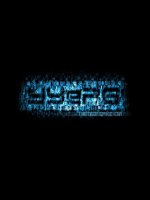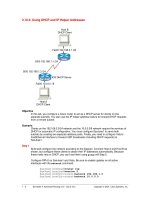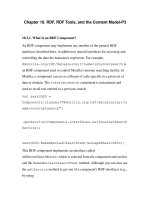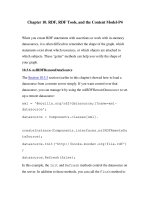Tài liệu Routing Protocols and Concepts: Chapter 10 ppt
Bạn đang xem bản rút gọn của tài liệu. Xem và tải ngay bản đầy đủ của tài liệu tại đây (2.56 MB, 51 trang )
Chapter 10
Link State Routing Protocols
2
For further information
This presentation is an
overview of what is
covered in the
curriculum/book.
For further explanation
and details, please read
the chapter/curriculum.
Book:
Routing Protocols
and Concepts
By Rick Graziani and
Allan Johnson
ISBN: 1-58713-206-0
ISBN-13: 978-58713-
206-3
3
Topics
Link-State Routing
Link-State Routing
Protocols
Introduction to the SPF
Algorithm
Link-State Routing
Process
Step 1: Learning About
Directly Connected
Networks
Step 2: Sending Hello
Packets to Neighbors
Step 3: Building the Link-
State Packet
Step 4: Flooding Link-
State Packets to
Neighbors
Step 5: Constructing a Link-
State Database
Shortest-Path First (SPF)
Tree
Implementing Link-State Routing
Protocols
Advantages of a Link-State
Routing Protocol
Requirements of a Link-State
Routing Protocol
Comparison of Link-State
Routing Protocol
Link-State Routing
Link-State Routing Protocols
Introduction to the SPF Algorithm
Link-State Routing Process
Step 1: Learning About Directly Connected Networks
Step 2: Sending Hello Packets to Neighbors
Step 3: Building the Link-State Packet
Step 4: Flooding Link-State Packets to Neighbors
Step 5: Constructing a Link-State Database
Shortest-Path First (SPF) Tree
5
Introduction Link-State Routing Protocols
Link-state routing protocols
AKA shortest path first protocols
Uses Edsger Dijkstra’s shortest path first (SPF) algorithm. (later)
Reputation of being much more complex than their distance vector
counterparts.
Functionality and configuration not complex
Algorithm is easy to understand
6
Introduction Link-State Routing Protocols
Distance vector routing protocols - road signs
Distance and vector
Link-state routing protocols - road map
Topological map used by each router
Each router determines the shortest path to each network
Distance Vector
Link-State
7
Introduction to the SPF
Algorithm
Dijkstra’s algorithm is commonly referred to as the shortest path
first (SPF) algorithm.
Shortest path first is really the objective of every routing
algorithm.
8
Introduction to the SPF
Algorithm
Each router calculates the SPF algorithm and determines the cost
from its own perspective. (more later)
20
5
2
The cost of the shortest
path for R2 to R3 LAN =
27 (20 + 5 + 2 = 27).
27 to R3
LAN
9
Introduction
to the SPF
Algorithm
The shortest path is not necessarily the path with the least number of hops.
SPF for R1
10
Shortest Paths for each Router
SPF for R3
SPF for R2
SPF for R1
SPF for R4
SPF for R5
11
Link-State Routing Process
1. Each router learns about its own links, its own directly connected networks.
(Interface is “up”)
2. Each router is responsible for meeting its neighbors on directly connected
networks. (OSPF Hello packets)
3. Each router builds a link-state packet (LSP) containing the state of each
directly connected link. (neighbor ID, link type, and bandwidth)
4. Each router floods the LSP to all neighbors, who then store all LSPs
received in a database.
Neighbors then flood the LSPs to their neighbors until all routers in the
area have received the LSPs.
5. Each router uses the database to construct a complete map of the topology
and computes the best path to each destination network.
The SPF algorithm is used to construct the map of the topology and to
determine the best path to each network. (Road map)
All routers will have a common map or tree of the topology, but each
router will independently determine the best path to each network within
that topology.
Detail and explanations are coming next!
12
Step 1: Learning About
Directly Connected
Networks
Step 1: Each router learns about its own links, its own directly
connected networks.
Interface configured with an IP address/subnet mask.
Directly connected networks are now part of the routing table
Regardless of the routing protocols used.
13
Step 1
A link is an
interface on a
router.
For the link
participate in the
link-state routing
process, it must be:
In the up state.
Included in one
of the network
statements.
14
Step 1
Link states - Information
about the state of a router’s
links
This information includes
interface’s:
IP address/mask
Type of network
Ethernet (broadcast)
or serial point-to-
point link
Cost of that link
Any neighbor routers on
that link
15
Step 1
Initially:
Router unaware of
any neighbor routers
on the link.
Learns of neighbor
when receives a
Hello packet from the
adjacent neighbor.
16
Step 2: Each router is responsible for meeting its neighbors on directly
connected networks.
Use a Hello protocol to discover any neighbors on their links.
A neighbor is any other router that is enabled with the same link-state
routing protocol.
Step 2: Sending Hello Packets to
Neighbors
17
Hello packets
“Keepalive” function
Stops receiving Hello packets from a neighbor, that neighbor is considered
unreachable and the adjacency is broken.
Step 2: Sending
Hello Packets to
Neighbors
18
Step 3:
Building the
Link-State
Packet
Step 3: Each router
builds a link-state
packet (LSP)
containing the state
of each directly
connected link.
19
Step 3: Building the
Link-State Packet
After established its adjacencies
Builds its LSPs
Link-state information about its links.
Sends LSPs out interfaces where it has established adjacencies with
other routers.
R1 not sent LSPs out its Ethernet interface.
A simplified version of the LSPs from R1
20
Step 4: Flooding Link-
State Packets to
Neighbors
Step 4: Each router floods the LSP to all neighbors, who then store all
LSPs received in a database.
Each router floods its link-state information to all other link-state routers.
When a router receives an LSP from a neighboring router, sends that
LSP out all other interfaces, except the interface that received the LSP.
Flooding effect of LSPs throughout the routing area.
21
Step 4: Flooding Link-
State Packets to
Neighbors
Link-state routing protocols calculate the SPF algorithm after the flooding is
complete.
22
Step 4: Flooding Link-
State Packets to
Neighbors
An LSP needs to be sent only:
During initial startup of the router or of the routing protocol process on
that router
Whenever there is a change in the topology,
link going down
link coming up
neighbor adjacency being established
neighbor adjacency being broken
23
Step 5:
Constructing a
Link-State
Database
After propagation of LSPs
Each router will then have an LSP from every link-state router.
LSPs stored in the link-state database.
Step 5 (Final Step):
Each router uses the
database to construct
a complete map of the
topology and
computes the best
path to each
destination network.
Link State Database for R1
24
Running SPF
Algorithm
Each router in the routing area can now use the SPF algorithm to
construct the SPF trees that you saw earlier.
25
Step 5: Constructing a Link-State Database
With a complete link-state database, R1 can use shortest path first (SPF)
algorithm to calculate shortest path to each network.
SPF algorithm results in an SPF tree.
SPF Tree for R1









